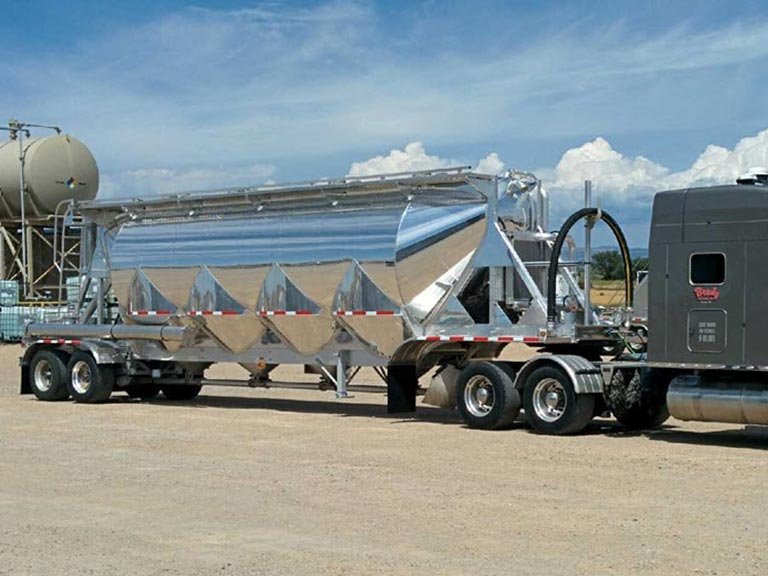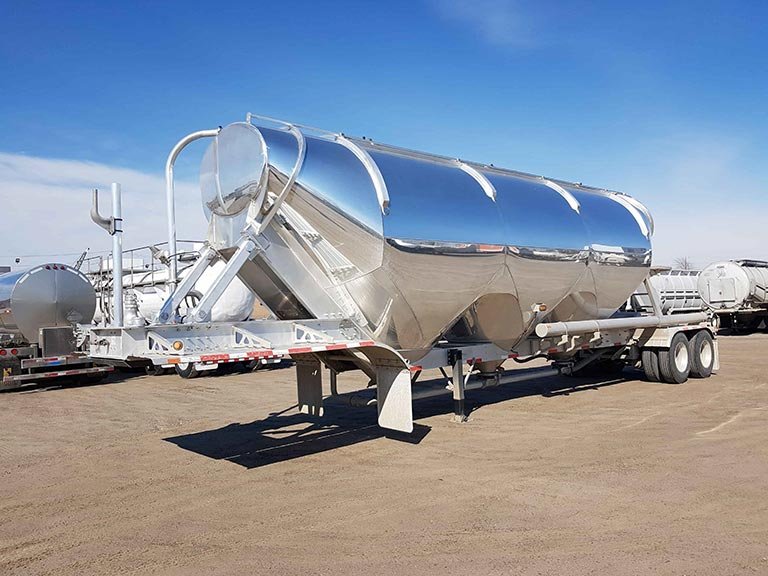A dry bulk tank is a customized trailer or tanker designed to transport huge amounts of non-liquid, granular, or powdered commodities. These tanks are designed to efficiently handle and unload products such as cement, wheat, plastic pellets, and other dry items. They frequently use pneumatic systems for discharge.
The need for efficient solid material transport is growing. Businesses must ensure safe and reliable transport of powdered, granular, or pelletized materials. At Genron International Trade, we focus on semi-trailer design and manufacturing, including dry bulk tanker. These tankers transport solid materials using pneumatic systems for easy loading and unloading.
Table of Contents
Understanding Dry Bulk Tanks
Dry bulk tanks are containers for transporting dry, flowable materials efficiently. They are vital in construction, food production, and manufacturing. These tanks ensure the safe transport of dry goods without packaging.
Dry bulk tanks carry dry materials in large quantities, keeping product integrity through vacuum-sealed compartments. They are designed for easy loading and unloading of materials like cement and sand, using pneumatic systems.
These tanks transport materials such as plastic pellets, sand, and chemical powders. They prevent contamination and handle the flow characteristics of dry bulk freight. This makes them essential for industries that move powdered or granular products.
Begin with a bespoke semi-trailer designed for your exact needs. Whether it’s heavy-duty hauling or specialized cargo, we’ve got the perfect solution to keep you moving forward.
How Pneumatic Dry Bulk Tanks Work
Pneumatic dry bulk tanks fluidize dry bulk materials efficiently. This makes them a key solution for transporting dry goods.
- Pneumatic Systems Explained: These tanks use an air pressure system to transform solid materials into a fluid-like state. The process starts with a blower, generating compressed air that flows through the tank. This air system creates “fluidization,” allowing solid particles to flow like liquids during transport.
- Loading and Unloading Process: Drivers control the pneumatic system through valves, directing air flow for loading and unloading. The material flows through cone-shaped hoppers into tubes, leading to a rear discharge valve. This technology minimizes product loss and contamination, enhancing efficiency.
Types and Specifications of Dry Bulk Tanks
Understanding dry bulk tank types and specifications is crucial for efficient material transport. These tanks vary in design and specifications based on their intended use.
- Tank Capacity and Measurements: Dry bulk tanks range from 560 to 3120 cubic feet in capacity. They are classified as “small cube” or “large cube” based on volume, meeting different freight needs.
- Construction Materials and Features: The materials used in dry bulk tank construction are key to their performance. Aluminum is preferred for its lightweight, maximizing payload while maintaining strength. Modern tanks feature internal bracing and reinforced plates for added safety.
- Safety Considerations: Safety is a top priority in dry bulk tank design and operation. Manufacturers address high center of gravity issues through specialized engineering and driver training. Drivers must be aware of safety challenges like material shifting and fall hazards.

Conclusion
At Genron International Trade, we focus on creating top-notch dry bulk tank solutions for various sectors. Our pneumatic dry bulk tanks are designed to handle the tough demands of materials transport. They come with customizable features to tackle specific loading and unloading issues.
We provide customization options for clients to tailor capacity, materials, and specialized features for unique transport needs. Our engineering team collaborates with clients to craft optimal solutions for a wide range of materials. This includes cement, construction aggregates, and even food-grade products.
With years of experience in trailer manufacturing, we continue to innovate and enhance our designs. We aim to meet the changing market demands and regulatory needs.
FAQ
What is the typical capacity of a pneumatic dry bulk tanker?
The capacity varies, but most pneumatic dry bulk tankers range from 20 to 40 cubic feet. Larger models are available for specific applications.
What types of products are commonly transported using dry bulk tankers?
Commonly transported products include cement, lime, sand, sugar, flour, and various plastic pellets.
How do pneumatic systems facilitate the loading and unloading of dry bulk materials?
Pneumatic systems use compressed air to move materials into and out of the tanker. This allows for efficient and controlled transfer.
What are the key considerations for ensuring the safe operation of dry bulk tankers?
Key safety considerations include proper loading and unloading procedures. Regular maintenance of the tanker and pneumatic system is also crucial. Following relevant industry regulations is essential.
What materials are typically used in the construction of dry bulk tanks?
Aluminum is commonly used due to its strength, durability, and resistance to corrosion.
How do drivers ensure accurate measurement of the materials being transported?
Accurate measurement is ensured through gauges and monitoring systems. These track the volume and flow of materials during loading and unloading.


